Around the World Travel Sabbatical Planning Tips
While in Hoi An, Vietnam in 2019, we met an enjoyable couple from Denver, CO who were halfway through a 12 month trip around the world.
These were not your early 20’s Gap Year kids, nor were they digital nomads like us.
No, they were the “We’re 40 years old and changing directions in life, so we’re going to travel for a year” couple. They both left good paying jobs to take a once-in-a-lifetime opportunity and run with it.
We thought our readers would be interested to learn more about their epic round the world trip, how they prepared, and how much it cost.
So we caught up with John and Jessica recently, and they generously shared some great insights and travel tips for planning a round the world sabbatical. We hope you enjoy!
A little background:
Jessica, a massage therapist, had been to 9 countries before this trip. John’s travel was mostly domestic–in fact, he didn’t fly on a plane until he was 26. John was working in sales and doing wood working on the side.
Dog sitting, visiting castles, and some construction work in Europe and New Zealand
Interview: Behind the Round The World Sabbatical
J&M: Where did the idea for this big trip come from?
John: When we first began dating, Jess had just gotten back from Thailand and I remember thinking that was so exotic. I had never known anyone who went to Thailand and I was almost sure I would never be able to go. That didn’t stop us from talking about it though.
Jess: We both shared the desire to get out and see the world. That was about it though because we had no money at the time. The idea was passed off and not given any more thought. We hunkered down in our odd jobs, got married, and enjoyed our Colorado lifestyle.
As time tends to change things and ideas, we began thinking about moving away from the Denver area traffic and higher cost of living that was having a negative effect on our days. For months we began putting into play our escape route.
And then one morning over coffee and a book, John said, “Hey, remember when we talked about traveling the world? Why don’t we do that instead?”
It was one of those life moments where everything kind of aligns and sort of makes sense so we both agreed this was what we needed to do.
J&M: How long was the trip in the works before you took off?
Jess: Roughly 1 year. We had already set the date of September 1st, 2018 to move out of Denver so we had been saving for that.
John: It was an easy transition from deciding to move to deciding to travel. It was literally going to bed one night with moving to the mountains as the plan and by breakfast the next morning we were now planning, and saving, for long term travel.
J&M: We haven’t seen you since February and your trip is finished. Fill us in on the places you went.
Jess: Alright. To keep it simple our travels go like this:
Europe (September – November):
Netherlands (2 weeks)
Belgium (5 days)
Germany (3 weeks)
Czech Republic (1 week)
Switzerland (3 weeks)
Italy (3 weeks)
Highlights: Biking around the Netherlands, the architecture everywhere, experiencing autumn in Europe, dog sitting in Switzerland and hiking with Tali in Chamonix, picking olives, making and decanting olive oil, meeting some great people through dog sitting and help exchanges, and eating everything in Florence and Rome.
SE Asia (December, January, February):
Thailand (32 days)
Vietnam (2 months)
Highlights: Train rides, meeting new friends in Kho Mook, the delicious food in Thailand and Vietnam, Pai, “mountain biking” and caving in Phong Nha, trains and buses, motorcycle trip through Central Vietnam, more food, Vietnamese coffee shops, Tet, the smiling faces, and the list goes on.
We loved this portion of the trip quite a bit if you couldn’t tell.
Venturing around Vietnam and trying new foods in Thailand
New Zealand (March/April):
Not long enough a.k.a. 6 weeks (Jess went to Australia for 1 week to travel with her sister and niece who flew out from Colorado)
Highlights: Australia and New Zealand. What’s not to like? Meat Pies are delicious and dangerous. So are Dairy’s. We never realized how much fried food is in this part of the world. Wanaka is a fun little town and is worth a gander for a few days. Really just rent a campervan and take a left when you’re supposed to take a right. It won’t matter; you’ll still have a great time.
Tip: Just don’t try to visit with only a week’s worth of vacation.
South America (April, June, July):
Chile (5 weeks)
Peru (4 weeks)
Ecuador (6 weeks)
Highlights: Stargazing, mountain biking, and hiking in San Pedro de Atacama; exploring Arequipa and eating ceviche/chicharones at the market; hiking the Colca Canyon and diving into the small village of Cabanaconde (condors everywhere); Lima; fancy buses; crazy roads; surfing in Montanita; “living” in Cuenca for 1 month.
Tips: Honestly there is so much to love about South America. The best food, in our opinion, was in Arequipa and Lima. We can’t tell you about Machu Picchu or Galapagos because we didn’t make it there. Next time, maybe.
Bus transit and accommodations in South America
United States (July, August, September, October):
Colorado (2 months)
Minnesota (2 weeks)
Arkansas (2 weeks)
We are counting the US in this trip because we are still technically traveling. We have been able to do some projects and dog sitting for 2 months in Colorado to increase our bank account balance. We’ve been able to see our friends get married, reconnect with family/friends, and rekindle our love for Colorado.
J&M: That sounds like a great time. What steps did you take to prepare for the trip?
John: We started by doing loads of research on budget travel, traveler’s insurance, when to visit certain locations, money and banking tips, vaccinations required, and anything else that came to mind as we learned more.
Our browser had a lot of tabs open all the time.
J&M: How did you save up enough money for a trip like this?
Jess: To pay for the trip we were saving money by doing a lot of dog/house sitting and John had a steady flow of “on the side” woodworking gigs. All of this went towards the trip which was nice because we could still enjoy life without having to scrimp and save.
The only downside was we worked a lot and didn’t see each other much. On the other hand, soon enough we wouldn’t be able to get away from each other.
J&M: Did you think of working while traveling?
John: We did look into it a little bit but we decided to not take the digital nomad path. We wanted to travel without having too many responsibilities so we did not research working online, teaching English, or being Instagram models too deeply.
Jess: We did stumble on 3 websites that really made this dream a reality: trustedhousesitters.com; helpx.net; and workaway.info.
Much of our time in Europe and New Zealand was spent utilizing these three networks and made our time there super cheap but also full of great memories and lasting relationships. It also gave us some structure but the real incentive was the amount of money it saved us.
Note from J&M: You can learn more about Work Away, Help Exchange, and House-sitting in Michelle’s book, Unconventional Budget Accommodations. 😉
J&M: Was it hard to tie up loose ends like leaving work, family and friends?
Jess: We don’t have careers that we are attached to, so leaving our jobs wasn’t a big deal. John may have wanted to stick around for another year to save more money but I was ready to go. The tough part for me was saying goodbye to family and friends.
John: My boss thought I was crazy for leaving but everyone else was pretty interested and excited for us. Many of my close friends and family are in Minnesota so saying goodbye to them wasn’t hard because sometimes a year will go by without seeing them anyway.
J&M: How did you decide where to start?
John: We initially thought of using the company Air Treks to purchase our RTW flights. It seemed like a great concept but we didn’t end up using them.
We did not want to be locked in to a pre-arranged flight plan. Plus, we wouldn’t have been able to use our credit card points for free airfare.
Jess: Then, in January, 2018 we found really cheap flights to Amsterdam and decided that would be the starting point. We definitely fell in love with Google Flights for finding, and choosing, when and where to fly.
Once we had our first destination we were able to start looking for a help exchange and we ended up getting a dog sit for the first 2 weeks in Amsterdam.
Note from J&M: You can learn more about Google Flights and booking airfare deals in Michelle’s course, Book Better Flights. 😉
J&M: Did you have any goals or guiding principles that you used to choose your destinations?
Jess: We pretty much knew which countries we definitely wanted to visit. Where the cost of lodging was expensive, i.e. Europe and New Zealand, we put a lot of time into applying for help exchanges. These guided us on which areas we visited along the way in some respects.
The only other goals we really had for locations were to eat great food and see some amazing landscapes.
John: It wasn’t so much about going to the “must see” locations for us. It didn’t matter what we saw, it was all new.
For example, we were in Peru for a month but did not go to Machu Picchu, and we don’t regret it because what we did in exchange was amazing as well (and with a lot fewer tourists).
J&M: How far in advance did you plan your itinerary for each place?
John: We always kept our eyes open for cheap airfare to the next country/continent and would end up booking about 2-3 months in advance for all flights. This time frame worked well for procuring great flight deals and finding help exchanges.
In South America we just decided to spend a month in each spot and slowly make our way north. We were told we didn’t have to plan much in advance there and found that to be true.
Jess: So we mentioned Air Treks earlier. If we would have booked through them, our air travel would have been about $3,500 per person.
By booking well in advance and using air miles for a few big flights we ended up spending about $1,500 per person for air travel.
J&M: With all of that planning was there any opportunity for spontaneity?
Jess: In the more expensive countries we weren’t too spontaneous as we had many more responsibilities with help exchanges and house sitting.
In the more affordable locations such as Thailand and Vietnam, where we didn’t have work exchange experiences, we were really able to go where ever we wanted to.
Lodging was plentiful everywhere we went, so we would book a few days out, but we avoided showing up without a reservation somewhere. It was always nice to have a destination when arriving in a new city/country for the first time.
John: Especially if it’s 100 degrees in Bangkok. Not the time or place to wander around looking for a hostel.
J&M: Were there pros/cons of your approach?
Jess: It really feels like from a financial standpoint this is the only way we really could have met our goals of traveling for such a long period and being able to see and be a part of so many places.
Yes, we would have loved to go to places like Machu Picchu, but we would have had to sacrifice so many other really great aspects of the trip in order to see just one place.
Sticking to a budget is not always the easiest thing to do but it’s worth it in the end.
John: Exactly. We may not have gone to all the “must see” areas but we had great experiences and I feel like we really connected with local culture as a result.
Maybe the one con is that we are now having a tough time deciding on where to put down roots after this experience.
Sharing a meal in Vietnam
J&M: Are there any other tools/resources you used to make all this happen?
John: Yeah, the internet and a phone. It’s so hard to think about doing a trip like this without the internet at our fingertips. It’s definitely made everything more accessible but I did float the idea of doing it Pre 2000’s style.
Recommended Travel Tools for Sabbaticals
Help Exchanges:
– Trusted Housesitters: Great if you love animals are into a slower pace and potentially random locations.
– Workaway: Choose wisely. Our experiences were all great but each one had its own idiosyncrasies. Our best one was in Christchurch, NZ. No weirdness there at all and we would visit in a heartbeat.
– HelpX: See Workaway. Also, this site is a little more ‘dated’ than Workaway but the same people are on both. Choose which format you like the most and go with it. I am old school and kind of like the Craigslist feeling that HelpX provides but Jess likes the easy navigation on Workaway.
Main rules:
1) Read carefully
2) Read reviews
3) Read between the lines.
Most of the people are great but there are some oddities too (and that includes reviewers).
Lodging:
– Airbnb
We used booking.com the most due to great deals and free cancellation. We looked at hostelworld.com but never used it. We actually ended up avoiding hostels for the most part and when we did stay at them, we were mostly annoyed.
Note from J&M: Take an extra $25 off your first reservation with our Booking.com referral link.
Transportation:
– Google Flights: Great for forecasting and tracking flight prices
* Check out Intentional Traveler’s Book Better Flights course
– Moovit: App that we utilized for public transportation in South America
– Local public transportation apps: Many cities have apps for riding the buses and metro lines
Communication:
– Skype: Free video chats/phone calls with family and friends
– WhatsApp: Great for contacting house sits and help exchanges
– Instagram: Keeps moms updated daily so they don’t think you’re dead or in prison
Misc:
– Currency XE: Money Converter (best tool ever)
– Google Maps: Download maps to use offline
* Check out Intentional Traveler’s Google Maps Travel Hacks course
– Google Translate: Doesn’t always get the point across accurately but can make people laugh
Credit Cards:
– Capital One Venture Card: Great Sign Up bonus to use for free flights
– Citibank Double Cash Card: We used prior to the trip for all daily expenses. This helped add up cash bonuses that ended up being more than we made selling our stuff (cars not included )
– Charles Schwab Check Card: Reimburses all ATM fees and did a great job clearing up an ATM withdrawal discrepancy in Chile. Also link to your home account and deposit a little bit of money at a time for safety reasons.
Note from J&M: For more advice and resources, see our post on cards and money matters for travel.
Round the World Sabbatical Travel Cost
J&M: Now to the question everybody wants to know. What did this trip cost?
Jess: We started the trip with $28,000 and still came back with money, which we feel really good about.
Prior to leaving the US we had purchased travel insurance for $2,400, bought flights to Minnesota, and flights to Amsterdam and Thailand.
Actually the flight from Rome to Thailand was paid for using points from our Venture card.
John: I created a spreadsheet to track our daily expenses. At the end of our 10.5 months outside of the US we averaged $55 / day, or $27.50 / person.
Before the trip we had read the book ‘Around the world for $50/day’ and soon realized we could probably make that happen for a couple. We were pretty happy with the outcome and love to tell people that Jess and I traveled the world for less than what many people spend on a wedding.
Jess: It was a surprise for us to see that Thailand was the only place where we went over budget or that we only spent $800 for our 5 weeks in Chile.
J&M: Did you find any tricks that helped you save money?
Jess: Yes, something I hadn’t said before is that we leveraged credit cards for awards points prior to the trip.
Our plan of attack was, and still is, to put all of our daily necessity expenses (groceries, gas, bills) on our credit card and then pay it off in full every month. It not only helps increase your awards points but also gives you a great credit score.
We ended up getting free flights from Rome to Bangkok, Auckland to Santiago, and Colorado to Minnesota by doing this.
John: Another big help, as we’ve mentioned, was the house sitting and help exchanges. Without those we would have been home a lot sooner. Plus, we made some great connections that would have never happened without them.
We also found that eating like the locals is a huge money saver and we always ate where the locals were. Whether it was a blue collar lunch place in Europe, sidewalk noodle shops in SE Asia, or almuerzos (set lunch) in South America we always had a cheap and tasty meal.
To us, food is such an important aspect of travel and is at the forefront of our travel memories. I’m getting nostalgic right now thinking of all the little food spots I would like to be transported to immediately.
New Zealand
J&M: To wrap up, it would be great to share a few quick recommendations for folks who might want to replicate the kind of trip you took. Do you have any advice you would like to provide?
- Be open to doing things you don’t find on Trip Advisor’s “Top 10 Things to Do” in your chosen destination. You won’t regret it.
- Spend more time doing or being where the locals are. Eat their food, learn their pleasantries, be a respectful, curious traveler.
- Help exchanges are a great way to dive in and really get a feel for a culture and most likely meet other travelers. It can also stave off homesickness and loneliness,
- When planning based on your budget, decide what/where is most important to you (what would you regret not doing/seeing). Plan around these main desires and be willing to sacrifice in other areas that are not as important to you.
- If you need to save money on the front end for your trip, find ways to save in your current lifestyle. For example: We used Consumer Cellular for our phone plan = $25/month/person! Huge savings!
- Think twice before you sell all of your stuff. We kept items that we loved and/or didn’t want to repurchase when we got back (stereo, bed, bikes, instruments, furniture). Basically, anything we didn’t want wasn’t worth much, so we had a garage sale and it didn’t make much and wasn’t really worth the time. We did sell our cars because we didn’t want to store them and have that headache.
- Understand that there will be times when you think you just want to go home. Stick it out. Call or connect with your family and friends if you need to. Start researching the next stop on your trip to get those adventure juices flowing again.
- Know that this type of travel is attainable. All it takes is a plan and desire to make it happen.
- If in Amsterdam, please watch the whole bike scene for a few days and understand the flow before jumping on a bike and joining in. The locals will thank you for it.
- Proof of Onward Travel: Make sure you have proof (i.e. a plane ticket) that you will be leaving the country you are traveling to.
*Check out One Way Fly if you need a quick, refundable plane ticket for proof of onward travel. - Lastly, we will leave you with a few quotes. The first is from our uncle (a seasoned traveler) at our wedding and the second is from one of the best 80’s movies ever:
“Your world is as big or as small as you make it” – UL
“Life moves pretty fast. If you don’t stop and look around once in a while, you could miss it.” – Ferris Bueller
Ready to Plan a Sabbatical Trip Around the World?
Over to you! Let us know what questions, concerns, and tips you have for RTW sabbatical travel planning. We’d love to hear about your trip plans and recommendations in the comments below.
Like this post? Pin it for later or share with friends!





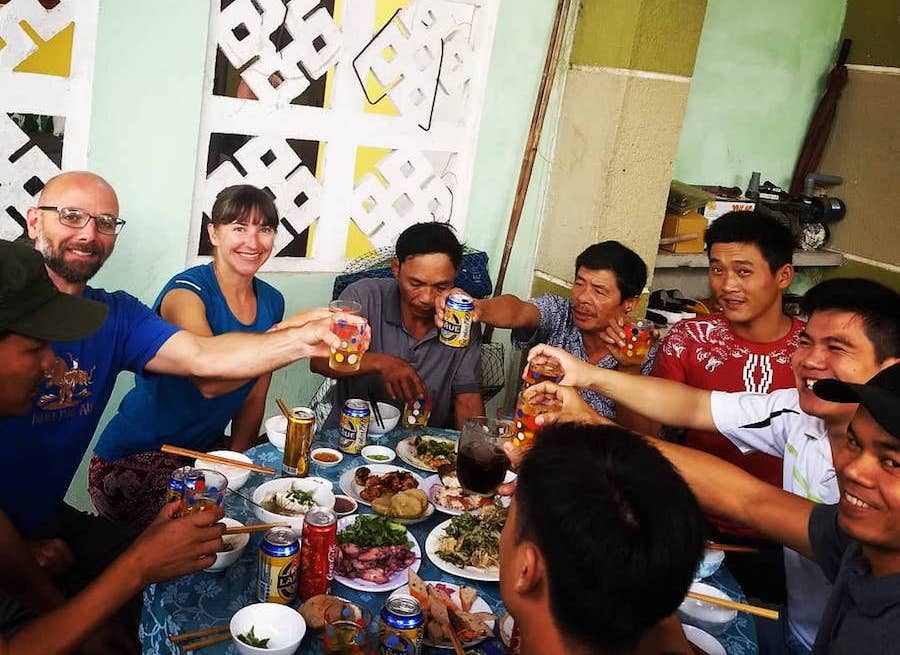


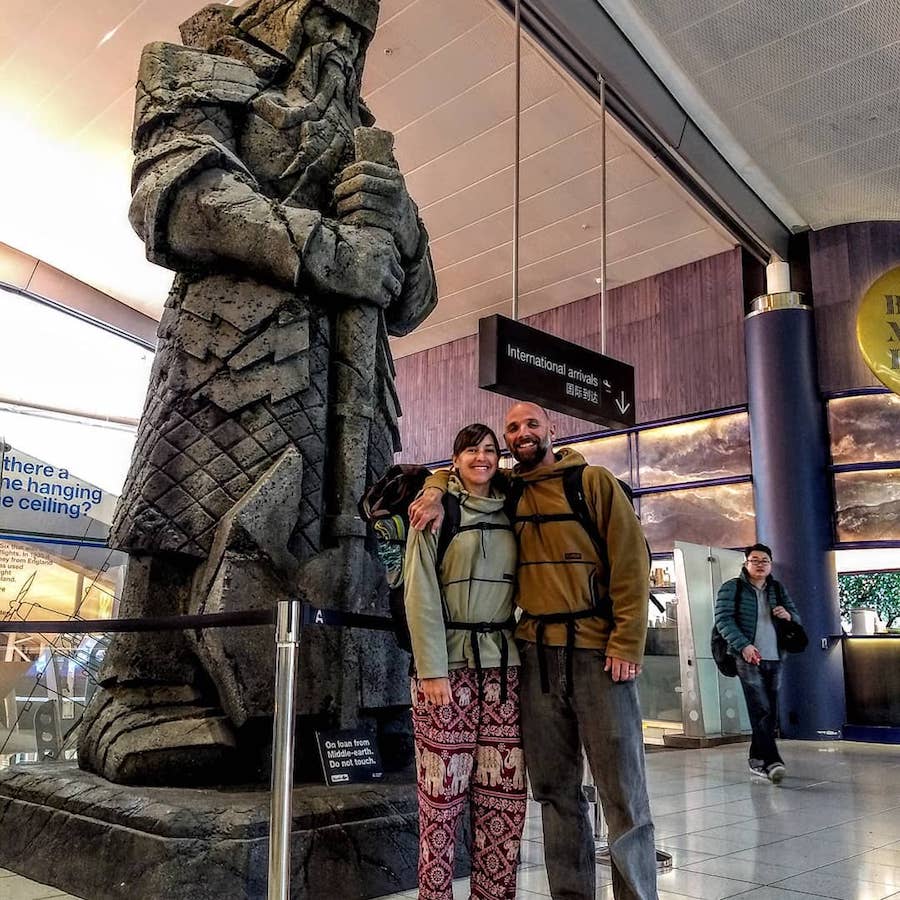
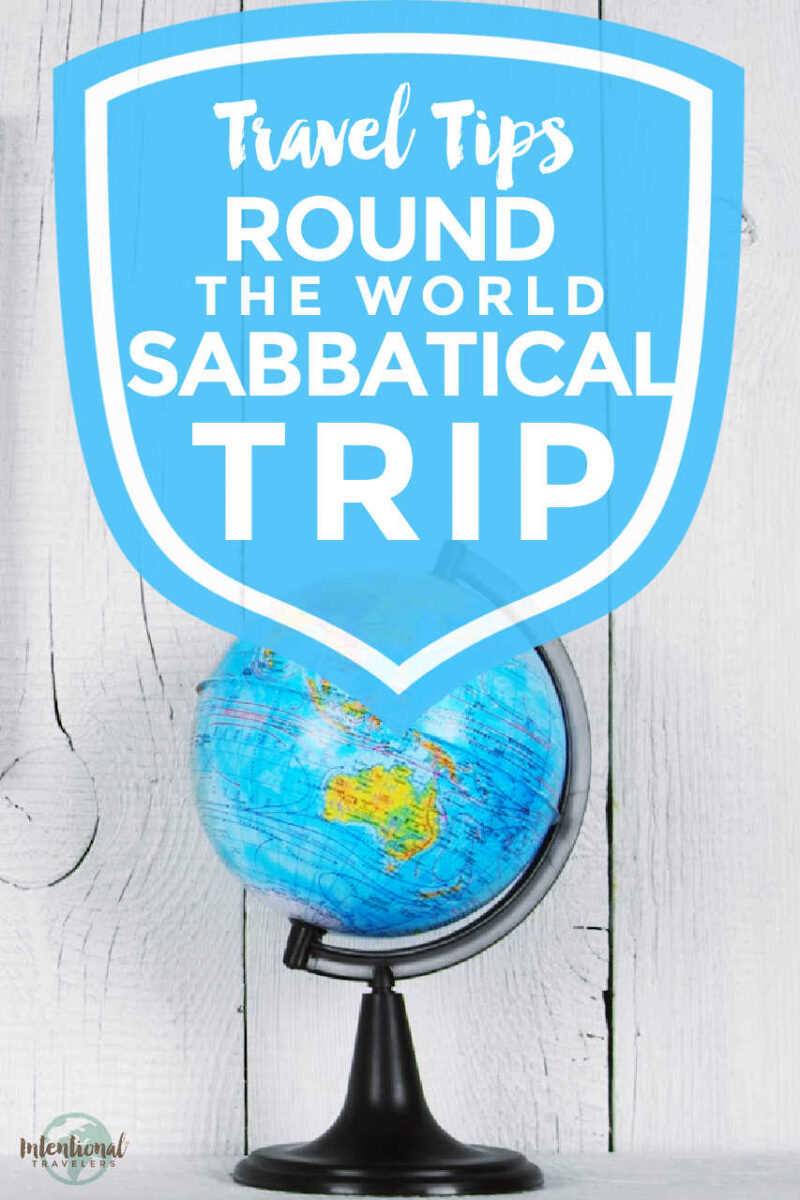

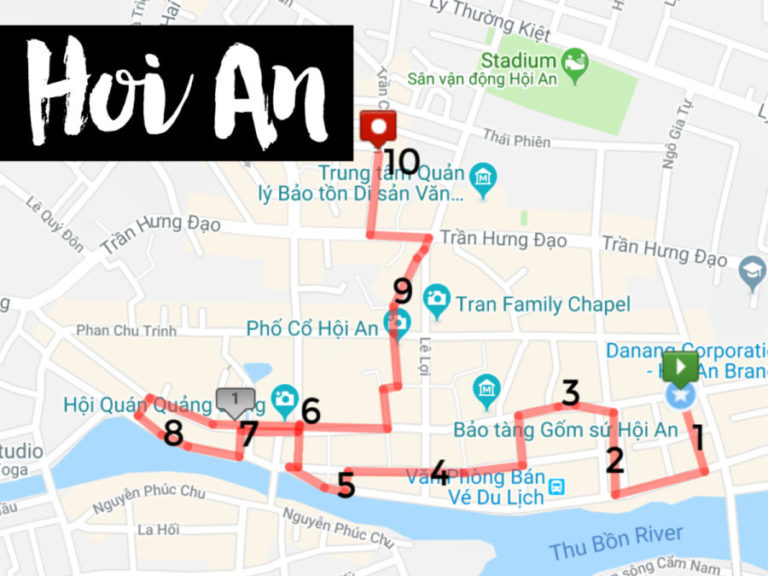

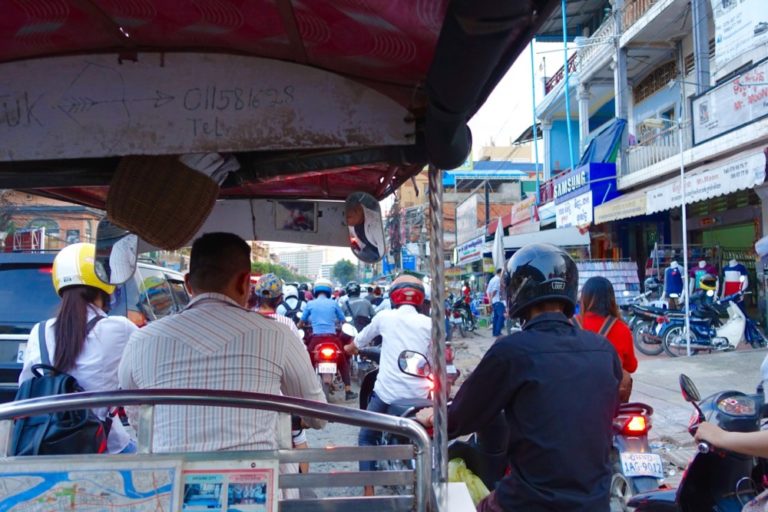
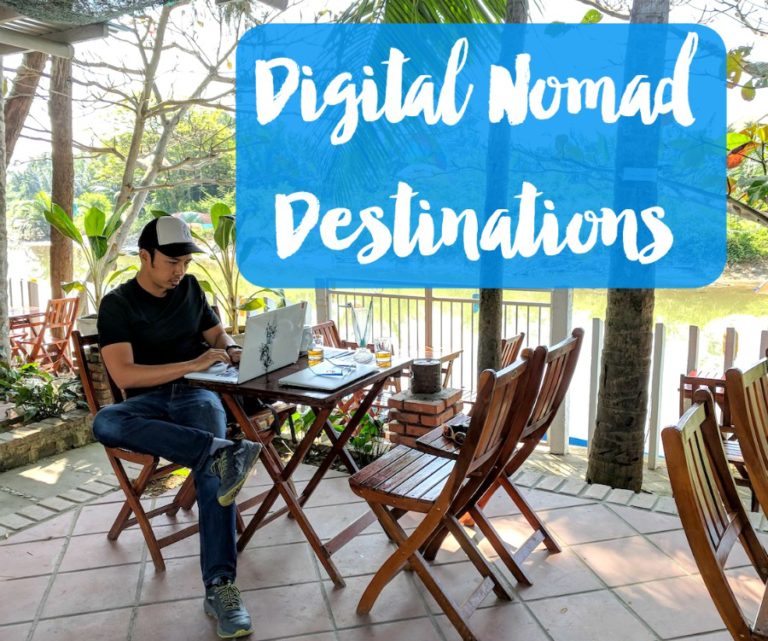
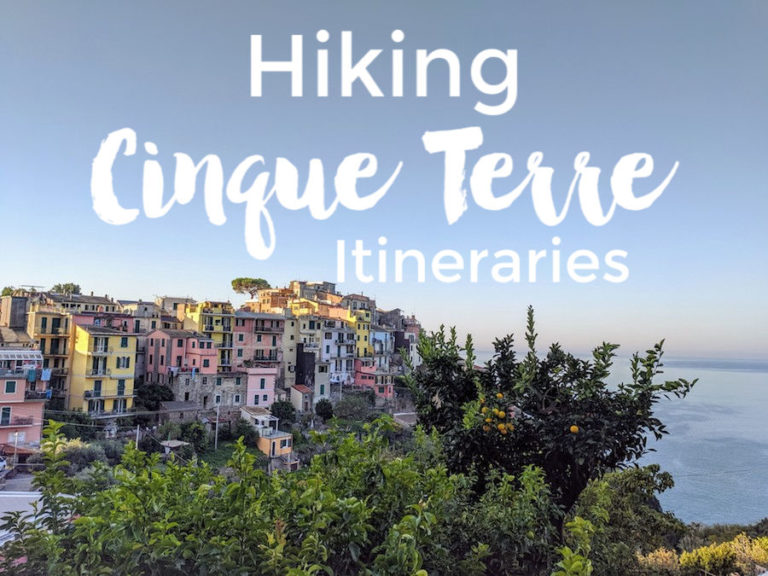
Really loved the interview. A 2 year sabbatical is a dream of mine that I’m starting to plan towards, and this is so helpful.
There is so much good information here! I really enjoyed reading about their adventure and the tips/tools they used to make it happen. Thanks!
Glad to hear it. We thought it would be interesting to hear from them. 🙂